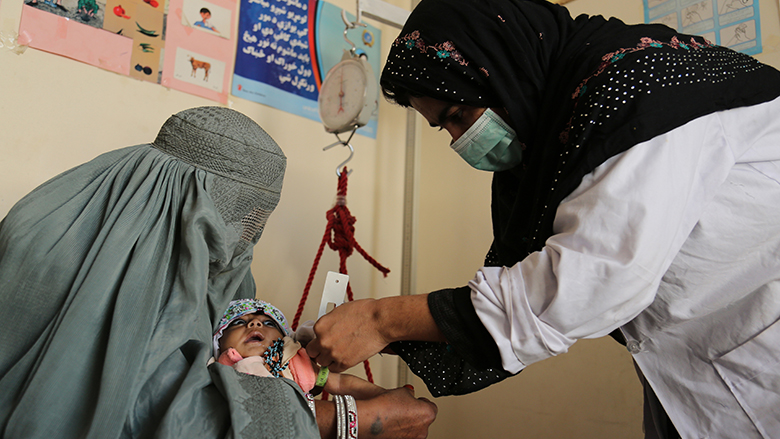Afghanistan has made strong and continued progress when it comes to health, especially for women and children, over the last 15 years despite continuing insecurity by establishing and innovating a large-scale partnership model with NGOs for service delivery.
The report Progress in the Face of Insecurity: Improving Health Outcomes in Afghanistan, finds that such health gains have been underpinned by expanded health services and a stronger health system even in highly insecure provinces, which has been especially important for the health of mothers and children. These improvements were in fact larger than in more secure provinces in the country.
- The number of children dying before their 5th birthday fell from 137 to 91 deaths per 1,000 live births, a reduction of 34 percent.
- Childhood stunting dropped at the rate of 2 percent per year between 2000 and 2015--faster than the global median decrease of 1.3 percent per year between 1980 and 2010.
- Highly insecure provinces made larger gains than more secure provinces in some key areas from 2003 to 2010. These areas include contraceptive use, which increased by 2 percent each year (but still remained very low); births preceded by ante-natal care rose by 3.5 percent per year; and the number of births assisted by skilled professionals increased by 2 percent per year. Overall progress on maternal health has been sustained, though at a much slower pace, since 2010.
Afghanistan’s innovative approach to its health system has been central to its success.
- While the national government provides financing, non-governmental organizations (NGOs) are instrumental in health service delivery, especially in remote and highly insecure areas. Seventy-two percent of the NGOs providing health services are Afghan.
- The national government has also provided oversight and direction in key areas, such as by establishing the capacity to procure health services in a transparent and merit based manner, creating a regulatory environment for resilient medicine supply chains, national health campaigns and aligned donor funding.
- There is a growing, majority female health workforce. This creates quality jobs for women in rural areas while also strengthening the health system.
Read more:

